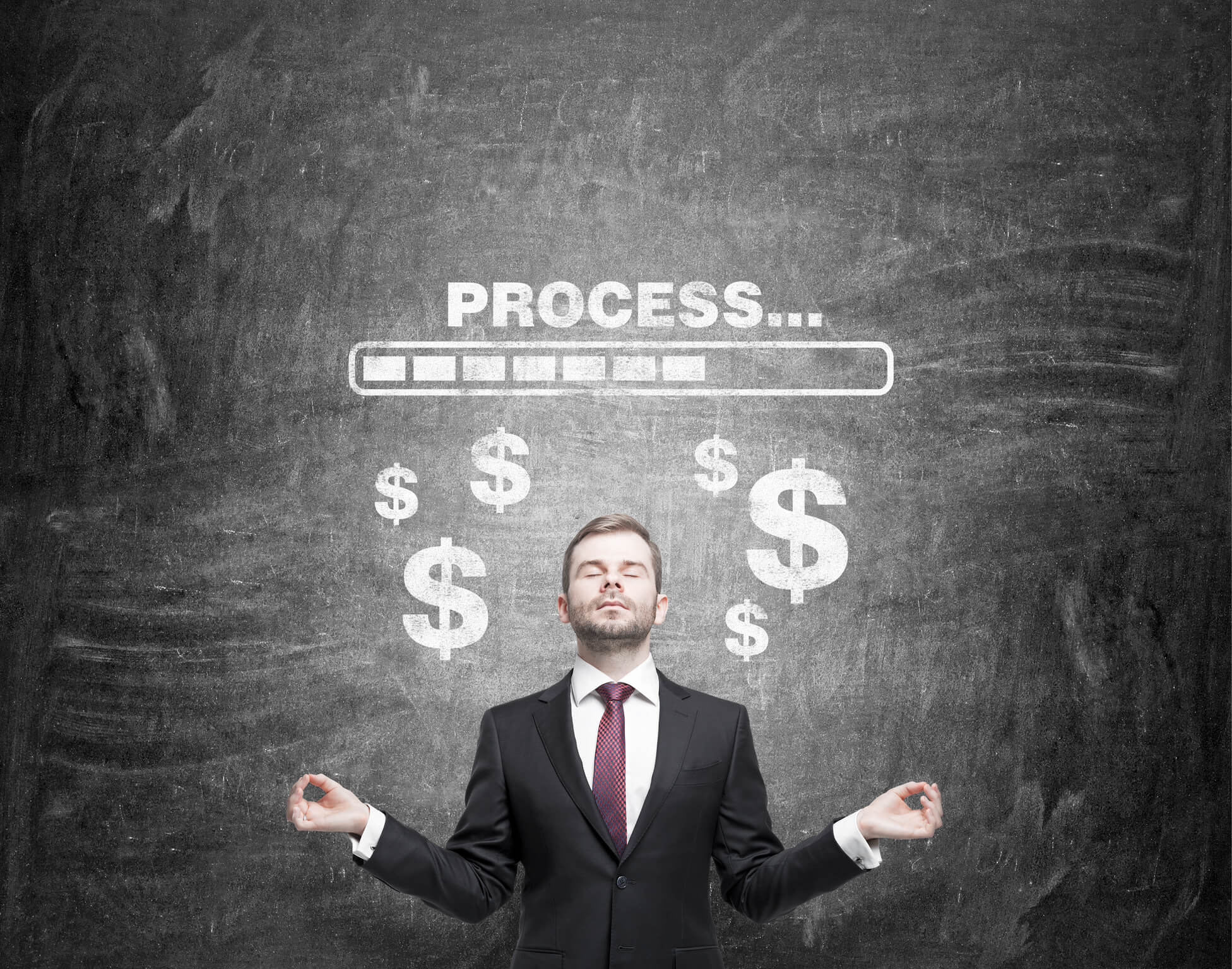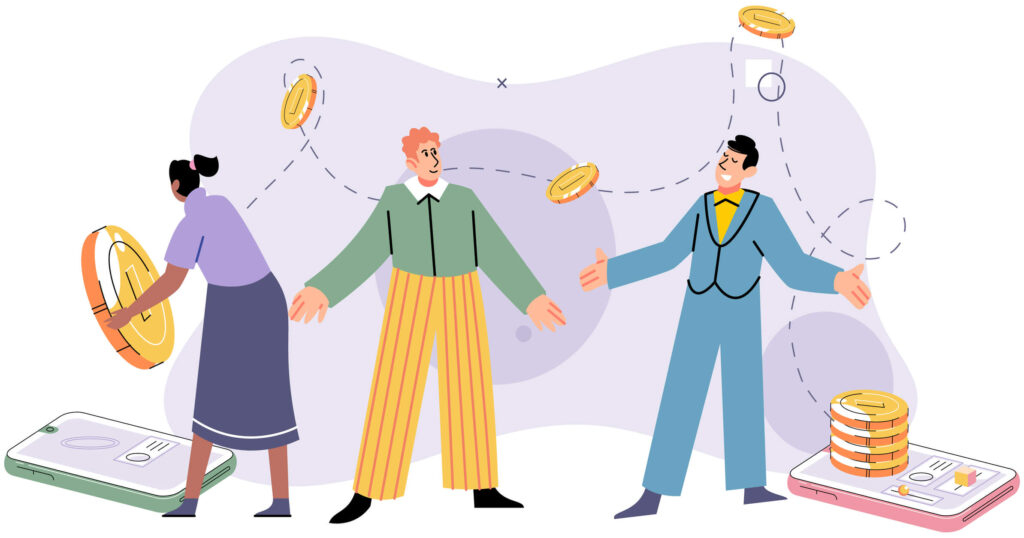
By American March 27, 2024
Payment processing has come a long way since the days of bartering and exchanging goods. With the advent of technology, the way we make payments has evolved significantly, and this evolution shows no signs of slowing down. In the coming years, we can expect to see several trends that will shape the future of payment processing in 2024 and beyond.
The Rise of Mobile Payments and Digital Wallets
One of the most significant trends in payment processing is the rise of mobile payments and digital wallets. With the increasing popularity of smartphones, consumers are now able to make payments using their mobile devices. This convenience has led to a surge in mobile payment adoption, with Statista predicting that the digital payments market value will reach US$11.55 trillion by 2024.
Digital wallets, such as Apple Pay and Google Pay, have also gained traction in recent years. These wallets allow users to store their payment information securely and make contactless payments using their smartphones. The convenience and security offered by digital wallets have made them a preferred payment method for many consumers.
However, the adoption of mobile payments and digital wallets is not without its challenges. Some consumers still have concerns about the security of their payment information and the potential for fraud. Payment processors and technology companies will need to address these concerns to ensure widespread adoption of mobile payments and digital wallets.
Biometric Authentication: The Future of Secure Payments
As payment processing becomes increasingly digital, the need for secure authentication methods becomes paramount. Biometric authentication, which uses unique physical or behavioral characteristics to verify a person’s identity, is emerging as a promising solution.
Biometric authentication methods, such as fingerprint scanning and facial recognition, offer a higher level of security compared to traditional methods like passwords or PINs. These methods are difficult to replicate or steal, making them an effective deterrent against fraud.
According to Juniper Research, biometric authentication will be used to secure over $3 trillion worth of mobile payment transactions by 2024. This growth can be attributed to the increasing adoption of smartphones with built-in biometric sensors and the growing acceptance of biometric authentication by consumers.
Blockchain Technology and its Impact on Payment Processing
Blockchain technology, which underpins cryptocurrencies like Bitcoin, has the potential to revolutionize payment processing. Blockchain is a decentralized and transparent ledger that records transactions across multiple computers, making it highly secure and resistant to fraud.
One of the key advantages of blockchain technology in payment processing is its ability to eliminate intermediaries, such as banks or payment processors. By using smart contracts, payments can be executed automatically when certain conditions are met, reducing the need for manual intervention and speeding up transaction times.
Blockchain technology also offers enhanced security and privacy. Each transaction recorded on the blockchain is encrypted and linked to previous transactions, making it nearly impossible to alter or tamper with the data. This transparency and immutability make blockchain an attractive option for secure and efficient payment processing.
Artificial Intelligence and Machine Learning in Payment Processing
Artificial intelligence (AI) and machine learning (ML) are transforming various industries, and payment processing is no exception. AI and ML algorithms can analyze vast amounts of data to detect patterns and anomalies, enabling payment processors to identify and prevent fraudulent transactions in real-time.
AI-powered fraud detection systems can analyze multiple data points, such as transaction history, location, and user behavior, to identify suspicious activities. These systems can learn from past fraud cases and continuously improve their accuracy over time.
According to a report by MarketsandMarkets, the global AI in the payment processing market is expected to reach $1.8 billion by 2024, driven by the increasing need for fraud detection and prevention. AI and ML technologies will play a crucial role in ensuring secure and seamless payment processing in the future.
The Role of Big Data in Personalized Payment Experiences
Big data analysis is another trend that will shape the future of payment processing. By analyzing large volumes of customer data, payment processors can gain valuable insights into consumer behavior and preferences, allowing them to offer personalized payment experiences.
For example, payment processors can use data analytics to identify patterns in customer spending habits and offer targeted promotions or discounts. They can also use data to tailor payment options based on individual preferences, such as offering installment plans for customers who prefer to pay in installments.
According to a study by McKinsey, companies that use data-driven personalization in their marketing strategies can increase their sales by up to 10%. This highlights the potential of big data analysis in creating personalized payment experiences that drive customer satisfaction and loyalty.
The Integration of Internet of Things (IoT) in Payment Processing
The Internet of Things (IoT) refers to the network of interconnected devices that can communicate and exchange data. The integration of IoT in payment processing opens up new possibilities for seamless and convenient transactions.
IoT devices, such as smartwatches or connected cars, can be used to make payments without the need for physical cards or cash. For example, a smartwatch equipped with NFC technology can be used to make contactless payments at a retail store.
However, the integration of IoT in payment processing also raises concerns about security and privacy. As more devices become connected, the potential for cyberattacks and data breaches increases. Payment processors will need to invest in robust security measures to ensure the integrity and confidentiality of IoT-based payment transactions.
Contactless Payments and the Demise of Cash
Contactless payments have gained significant popularity in recent years, and this trend is expected to continue in the future. Contactless payments allow consumers to make transactions by simply tapping their cards or smartphones on a payment terminal, eliminating the need for physical contact or the use of PINs.
The COVID-19 pandemic has further accelerated the adoption of contactless payments, as consumers seek safer and more hygienic payment options. According to a survey by Mastercard, 79% of respondents worldwide said they are now using contactless payments.
The rise of contactless payments has also led to a decline in cash usage. According to a report by Capgemini, cash usage is expected to decline by 13% globally by 2024. This shift towards contactless payments not only offers convenience and speed but also reduces the risk of theft and the spread of germs.
The Emergence of Cryptocurrencies in Mainstream Payment Systems
Cryptocurrencies, such as Bitcoin and Ethereum, have gained significant attention in recent years. While their volatility and regulatory challenges have hindered their widespread adoption as a mainstream payment method, cryptocurrencies are expected to play a more prominent role in the future of payment processing.
Cryptocurrencies offer several advantages over traditional payment methods. They enable fast and low-cost cross-border transactions, eliminate the need for intermediaries, and provide enhanced security and privacy. As the technology matures and regulatory frameworks become more established, cryptocurrencies are likely to become a viable alternative to traditional payment systems.
According to a report by MarketsandMarkets, the global cryptocurrency market is projected to reach $1.4 billion by 2024, driven by the increasing acceptance of cryptocurrencies by merchants and consumers. Payment processors will need to adapt to this changing landscape and provide seamless integration of cryptocurrencies into their payment systems.
The Future of Payment Processing: Challenges and Opportunities
While the future of payment processing holds great promise, it also presents several challenges that need to be addressed. One of the key challenges is ensuring the security and privacy of payment transactions. As payment processing becomes increasingly digital, the risk of cyberattacks and data breaches increases. Payment processors will need to invest in robust security measures and stay ahead of evolving threats to protect customer data and maintain trust.
Another challenge is the need for interoperability and standardization. With the proliferation of payment methods and technologies, it is essential to establish common standards that enable seamless integration and interoperability between different payment systems. This will ensure a smooth and consistent payment experience for consumers and merchants.
Furthermore, regulatory frameworks need to keep pace with technological advancements in payment processing. As new payment methods and technologies emerge, regulators will need to adapt and establish clear guidelines to ensure consumer protection, prevent fraud, and promote fair competition.
Despite these challenges, the future of payment processing also presents significant opportunities. The increasing adoption of mobile payments, digital wallets, biometric authentication, blockchain technology, AI, and big data analysis opens up new possibilities for secure, convenient, and personalized payment experiences. By embracing these trends and addressing the challenges, payment processors can stay ahead of the curve and provide innovative solutions that meet the evolving needs of consumers and merchants.
FAQs:
Q1: What are the advantages of mobile payments over traditional methods?
Mobile payments offer several advantages over traditional payment methods. They provide convenience, allowing users to make payments anytime, anywhere using their smartphones. Mobile payments also eliminate the need to carry physical cards or cash, reducing the risk of loss or theft. Additionally, mobile payments can offer enhanced security through features like biometric authentication and tokenization, making them a more secure option compared to traditional methods.
Q2: How does biometric authentication enhance payment security?
Biometric authentication enhances payment security by using unique physical or behavioral characteristics to verify a person’s identity. Biometric data, such as fingerprints or facial features, is difficult to replicate or steal, making it a highly secure authentication method. By using biometric authentication, payment processors can ensure that only authorized individuals can access and make payments using their accounts, reducing the risk of fraud and unauthorized transactions.
Q3: What role does blockchain play in ensuring transparent and secure transactions?
Blockchain technology plays a crucial role in ensuring transparent and secure transactions. Blockchain is a decentralized and transparent ledger that records transactions across multiple computers. Each transaction recorded on the blockchain is encrypted and linked to previous transactions, making it nearly impossible to alter or tamper with the data. This transparency and immutability make blockchain an attractive option for secure and efficient payment processing, as it eliminates the need for intermediaries and provides a high level of security against fraud.
Q4: How can artificial intelligence improve fraud detection in payment processing?
Artificial intelligence can improve fraud detection in payment processing by analyzing vast amounts of data to detect patterns and anomalies. AI-powered fraud detection systems can analyze multiple data points, such as transaction history, location, and user behavior, to identify suspicious activities in real-time. These systems can learn from past fraud cases and continuously improve their accuracy over time, enabling payment processors to detect and prevent fraudulent transactions more effectively.
Q5: How does big data analysis help in creating personalized payment experiences?
Big data analysis helps in creating personalized payment experiences by analyzing large volumes of customer data. By analyzing customer spending habits, preferences, and demographics, payment processors can gain valuable insights into individual customer needs and tailor payment options accordingly. For example, they can offer targeted promotions or discounts based on customer preferences or provide installment plans for customers who prefer to pay in installments. This personalization enhances customer satisfaction and loyalty, driving business growth.
Q6: What are the potential risks associated with IoT integration in payment processing?
The integration of IoT in payment processing presents potential risks related to security and privacy. As more devices become connected, the potential for cyberattacks and data breaches increases. Hackers may exploit vulnerabilities in IoT devices to gain unauthorized access to payment information or disrupt payment transactions. Additionally, the collection and storage of vast amounts of data from IoT devices raise concerns about privacy and data protection. Payment processors will need to invest in robust security measures and ensure compliance with privacy regulations to mitigate these risks.
Q7: Are contactless payments truly secure?
Contactless payments are considered secure due to several built-in security features. Contactless payment cards and devices use near-field communication (NFC) technology, which requires close proximity between the card or device and the payment terminal for a transaction to occur. This reduces the risk of unauthorized transactions from a distance. Additionally, contactless payments often employ tokenization, where a unique token is generated for each transaction, replacing sensitive payment information. This adds an extra layer of security, as the token cannot be used for fraudulent purposes. However, it is essential for consumers to protect their contactless payment devices and report any unauthorized transactions promptly.
Q8: What are the benefits and drawbacks of using cryptocurrencies for payments?
Using cryptocurrencies for payments offers several benefits, such as fast and low-cost cross-border transactions, enhanced security and privacy, and the elimination of intermediaries. Cryptocurrencies also provide financial inclusion for the unbanked population, as they do not require a traditional bank account. However, there are also drawbacks to using cryptocurrencies. The volatility of cryptocurrencies can make them a risky investment and a less stable store of value compared to traditional currencies. Regulatory challenges and limited acceptance by merchants can also hinder their widespread adoption as a mainstream payment method. Additionally, the irreversible nature of cryptocurrency transactions can be a disadvantage if a payment needs to be disputed or refunded.
Conclusion
The future of payment processing is set to be shaped by several key trends. The rise of mobile payments and digital wallets, the adoption of biometric authentication, the integration of blockchain technology, the use of artificial intelligence and machine learning, the role of big data analysis, the emergence of IoT, the growth of contactless payments, and the acceptance of cryptocurrencies all point towards a future where payments are more secure, convenient, and personalized.
While these trends offer significant opportunities for payment processors, they also present challenges that need to be addressed. Ensuring the security and privacy of payment transactions, establishing interoperability and standardization, and adapting regulatory frameworks to technological advancements are crucial for the successful implementation of these trends.
By embracing these trends and addressing the challenges, payment processors can stay ahead of the curve and provide innovative solutions that meet the evolving needs of consumers and merchants. The future of payment processing in 2024 and beyond holds great promise, and those who embrace it will be well-positioned to thrive in the digital economy.


